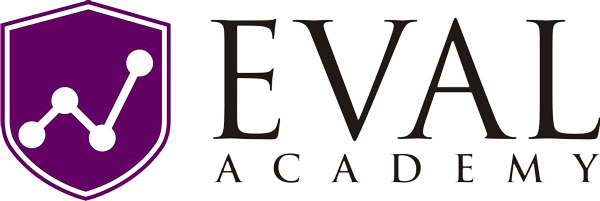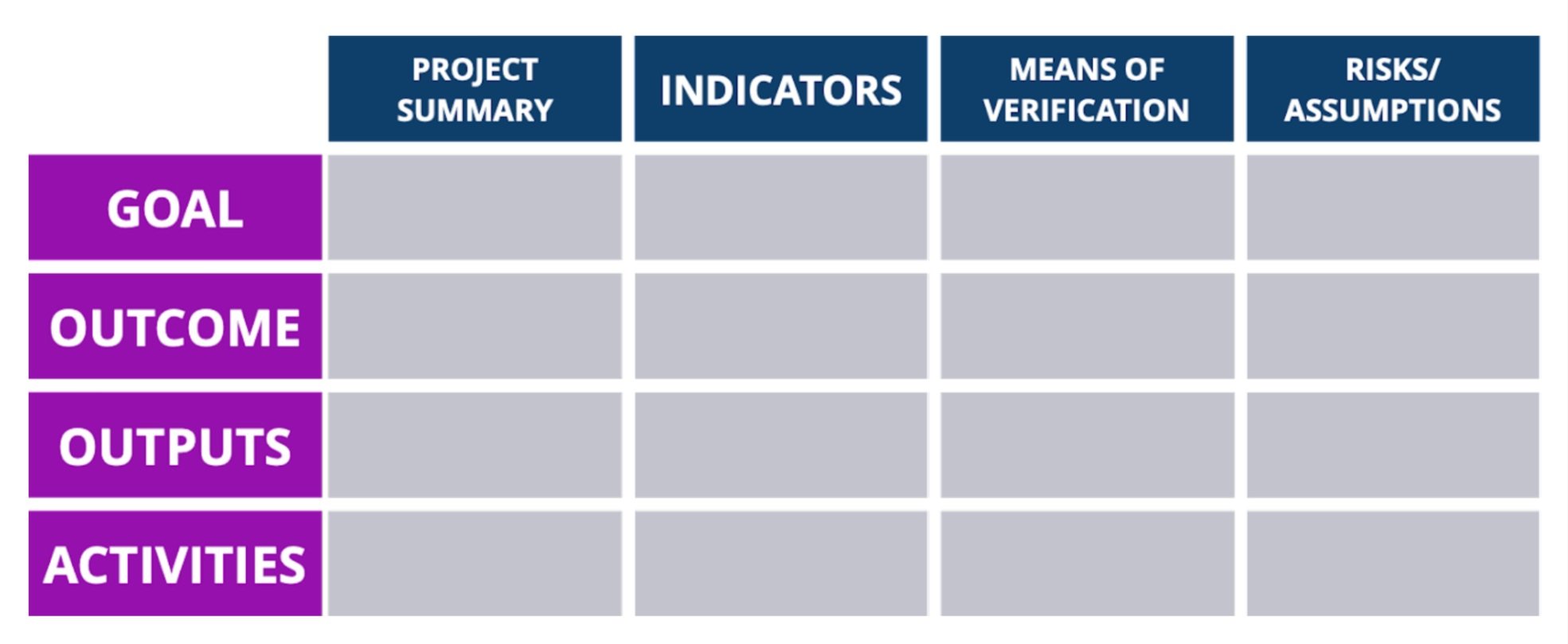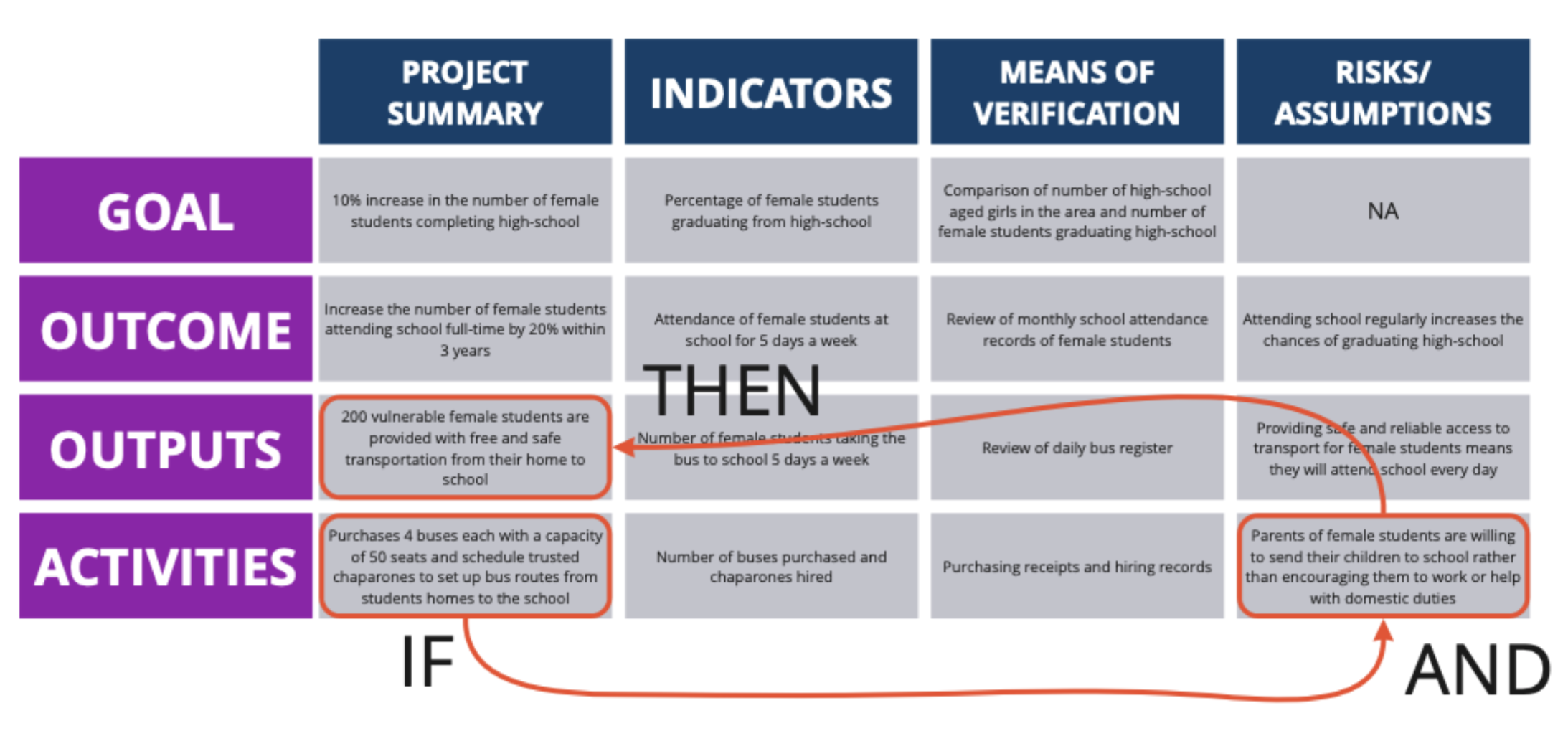Using log frames: why they’re useful and how to make one
This article is rated as:
A Log Frame is a tool that has mainly been used for designing, monitoring, and evaluating international development projects. Using this tool is a way of structuring the main elements in a project or program, and highlighting the logical connections between them.
In this article, we explain what a Log Frame is (spoiler: it’s not a logic model), why they can be useful tools for program planning and evaluation outside of international development, and how to make one of your own.
What is a Log Frame?
The Log Frame was developed back in 1969 for the U.S. Agency for International Development (USAID). It was developed as a planning tool for international development programs in the form of a matrix which presents a program’s main goal, activities, and what these activities are expected to lead to.
This visual approach helps you to think about the relationships between available resources, planned activities, and the desired changes or results. This structure also helps to explain the linkages between a program’s components.
It follows this main idea:
The successful completion of these activities = the production of these outputs
The production of these outputs = these changes through outcomes
These changes through outcomes = the achievement of these objectives
The achievement of these objectives = contributions to the larger goal
Therefore, this tool can help program planners to explain how they believe change will be realized. For evaluation purposes, the Log Frame also identifies the measures and indicators that will help to monitor the program’s anticipated results.
Although there are a few models that focus on logical links between a program and its contribution to success, be careful not to confuse Log Frames with the following:
Results Frameworks: Log Frames are focused more on how you will get to your program’s goal. Results Frameworks focus more on explaining the program’s results.
Logic Models: although the two are very similar, a Log Frame is depicted using a matrix or table, whereas a Logic Model is shown using a flow chart.
Theory of Change (ToC): ToC is also used for program design, whereas Log Frames are useful mainly for evaluation only. A ToC is also more explanatory and for explaining more complex initiatives, whereas Log Frames are descriptive and better placed for small to medium sized projects. Log Frames don’t easily capture the how and why in the same way a ToC does.
When and why are Log Frames used?
Since their development for USAID, Log Frames have become a standard approach required by donors for grant applications. For international development programs, they have become a staple of project planning and evaluation. Due to their utility and accessibility, they’re now also being used for programs outside of the international development realm.
Most Log Frames are developed during program design and are updated throughout the program’s lifespan. Log Frames are not set in stone and should be flexible to the program’s needs and any changes happening on the ground. Developing a Log Frame at the program planning stages helps to involve the whole team and allow key stakeholders to provide ideas about how they see the program operating to reach its goals.
Log Frames can be used for the following:
To confirm the theory of why your program will result in the desired change. Log Frames can help you to see whether your program will really work and identify any flaws in the theory. It’s all about being logical!
Help you in making strategic decisions that align with the logic of how your program will contribute to change and reach its goal. It can also help you to allocate resources to where they will be used most effectively.
To support transparency by clearly describing what your program aims to achieve and how. This can help your program to be more attractive to donors by clearly and logically explaining your ideas. It can also help you to make sure that all staff are on the same page.
By including indicators of how you will measure change, a Log Frame helps you to develop how you will monitor and evaluate your program. This provides the groundwork for how an evaluation can measure the impact of your program.
What are the key components of a Log Frame?
A Log Frame is commonly presented as a 4x4 table with 16 cells, though this can be modified if needed. Each row represents types of events that take place to help the program achieve its goals. Although the wording may differ slightly, these include:
Main Goal
Outputs
Outcomes
Activities
The first column describes how the program will reach its objective. The second and third columns summarise how the program’s achievements will be tracked through indicators (i.e., measurement of change) and sources of information (i.e., information needed that will allow indicators to be measured). The last column lists the assumptions or risk analysis. These are the factors outside of the program’s control that are necessary to ensure the program’s success.
How do I develop a Log Frame?
It is important to develop a Log Frame with key stakeholders included in the program. Collaborating helps to make sure that it is not developed through a “top-down” approach and leads to better program planning by ensuring that everyone is on the same page in terms of shared objectives. Developing a Log Frame often works best through a mind-mapping session.
Firstly, it is important that there is a clearly established problem your program aims to address. You should also be very aware of the context within which your program will operate. It helps to think about setting your goals first and then working backwards to the grassroots to see what you need to do to reach these goals.
The main questions to consider in the development of your Log Frame include:
What will our program achieve?
What activities will we complete?
What resources will we need to do this?
What are the problems and challenges we might face along the way?
How will we measure the progress and outcomes of the program?
Example of a Log Frame (Adapted from Tools4Dev)
There can be more than one indicator and assumption listed for each level, but it is good to keep these manageable by using tools such as SWOT analysis (see our free template here), Stakeholder Analyses, and a Risk Matrix.
A Log Frame should also be tested to check the logic. A simple test is to ask the following:
IF these activities are undertaken AND the assumptions hold true, THEN the intended outputs will be created
IF these outputs are delivered AND the assumptions hold true, THEN the purpose will be achieved
IF the purpose is achieved AND the assumptions hold true, THEN the intervention will have contributed to the overarching goal
(Adapted from DFID, 2011)
Once developed, make sure that the Log Frame doesn’t just sit on a shelf throughout program implementation. Review it frequently and use it to support decision-making, manage activities, assess progress, and keep stakeholders aware of plans to monitor progress.
Pros & Cons of using a Log Frame
Benefits of a Log Frame:
It ensures objectives are clear and measurable
It ensures concrete evidence for achievement is collected
Because risks and assumptions are made explicit, problems can be analyzed systematically
Weaknesses of a Log Frame:
It may cause rigidity in program management if it is not viewed as something that can be updated throughout program implementation
It is a “one size fits all approach” which does not always capture the complexity and context of a program




